Post by Casey on Mar 29, 2012 18:53:04 GMT -8
Say you buy a bird from a breeder, store, or you find a bird and it has a band... the band can tell you things such as age, breeder, and state/province the bird was from, depending on the band.
Bands can also be colour coded for the year, but this varies between countries and individual clubs the bands came from.
Most bands have a special number on them that identifies that particular bird, and often there will be a special code indicating a breeder code. **Note, not all bands have a breeder code!**
Also most bands will have a single letter on them, this indicates the size of the band.
Say a band reads 473 N 10 AAC
473 is the identification number.
N is the size.
10 is the year.
AAC is the society/club the band originated from.
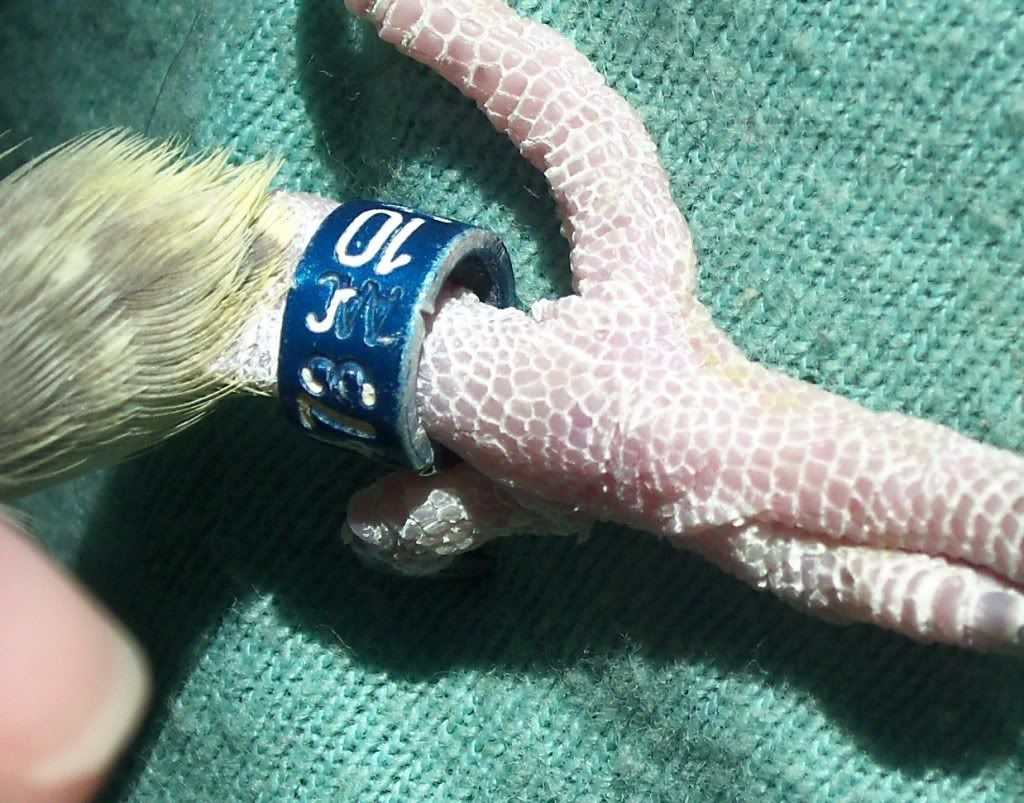
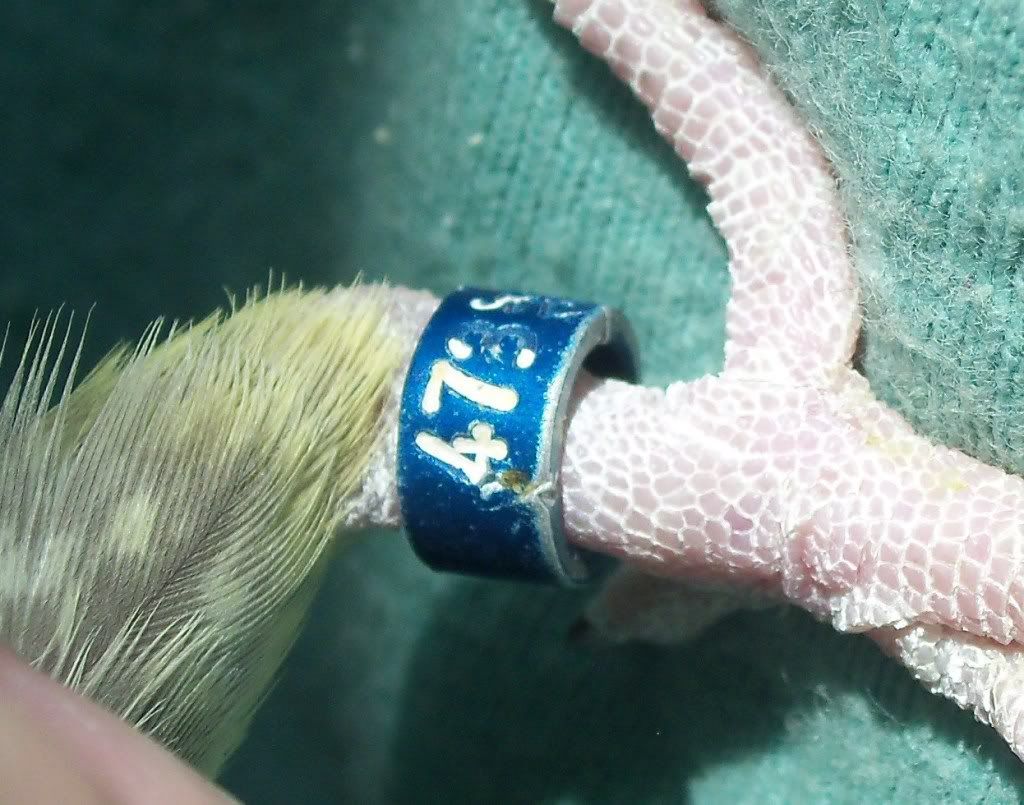
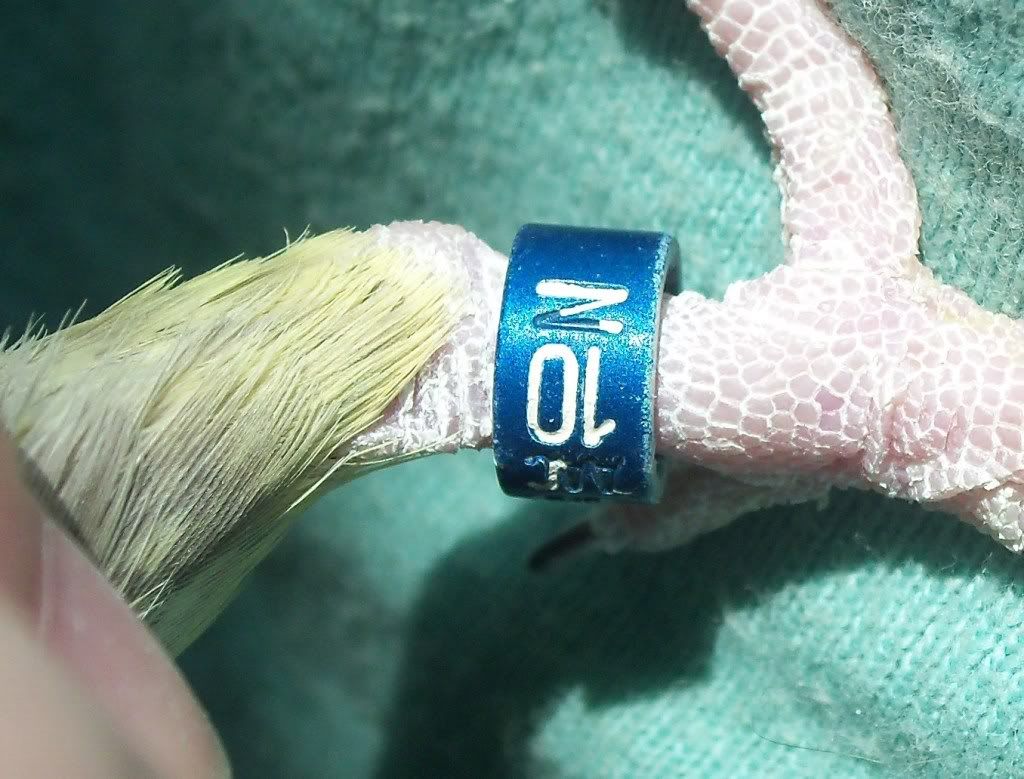
If your bird has a band, it is very important to remember and write down the numbers on the band. This will be very useful if your bird ever escapes as this will provide positive identification, however be aware bands can be removed with special tools.
Also, it is important for knowing the age (though not always a guarantee) of the bird. Especially important for breeders who need to know the age of their bird to assess if they are a good healthy age for breeding.
Keep in mind, open bands can be placed on a bird of any age and can be dangerous. They are prone to catching on things and the bird getting tangled in. If your band has a closed band even, be sure its properly fitted and check it regularly for problems. If the bird injures the banded leg or foot, swelling with a band can cause severe damage to the circulation. Be aware that any band can get caught up in something but be sure to regularly check your birds band and leg.
Bands can also be colour coded for the year, but this varies between countries and individual clubs the bands came from.
Most bands have a special number on them that identifies that particular bird, and often there will be a special code indicating a breeder code. **Note, not all bands have a breeder code!**
Also most bands will have a single letter on them, this indicates the size of the band.
Say a band reads 473 N 10 AAC
473 is the identification number.
N is the size.
10 is the year.
AAC is the society/club the band originated from.



If your bird has a band, it is very important to remember and write down the numbers on the band. This will be very useful if your bird ever escapes as this will provide positive identification, however be aware bands can be removed with special tools.
Also, it is important for knowing the age (though not always a guarantee) of the bird. Especially important for breeders who need to know the age of their bird to assess if they are a good healthy age for breeding.
Keep in mind, open bands can be placed on a bird of any age and can be dangerous. They are prone to catching on things and the bird getting tangled in. If your band has a closed band even, be sure its properly fitted and check it regularly for problems. If the bird injures the banded leg or foot, swelling with a band can cause severe damage to the circulation. Be aware that any band can get caught up in something but be sure to regularly check your birds band and leg.


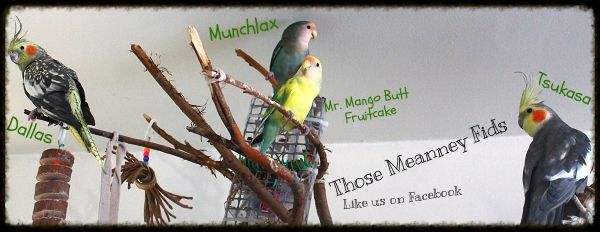
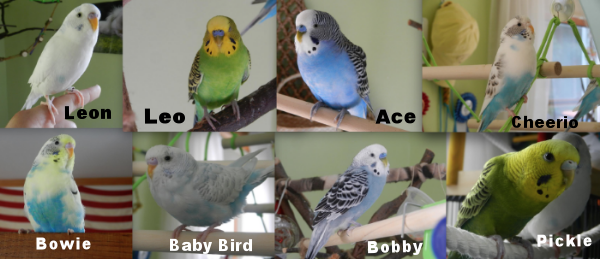
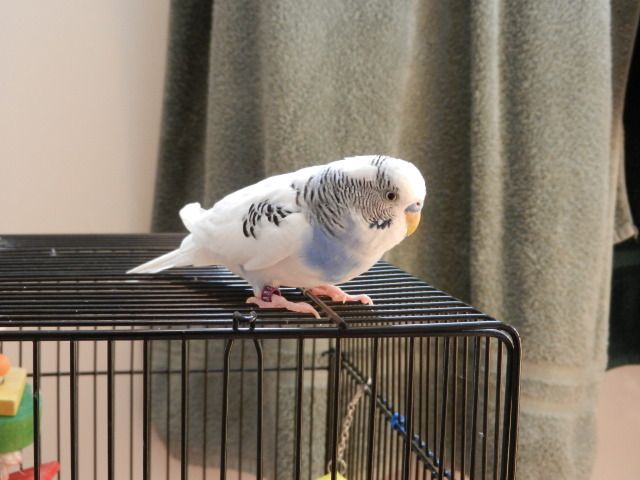


 .. and already have had the cage set up for them when she got home..
.. and already have had the cage set up for them when she got home.. 